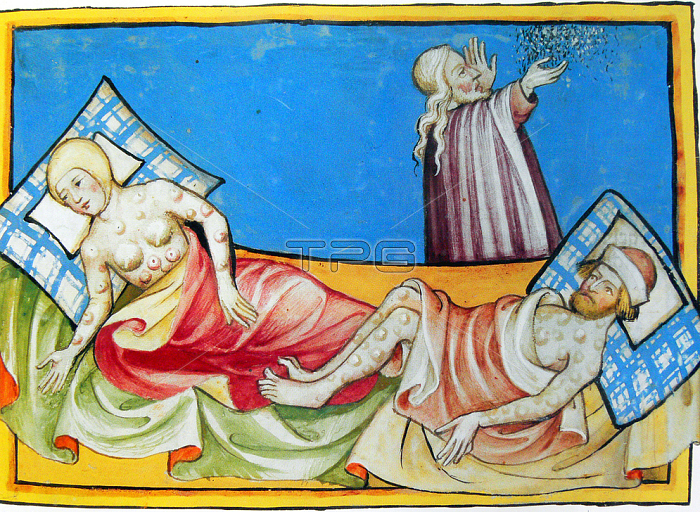
The disease represented is generally believed to be the plague. The location of bumps or blisters; however; is more consistent with smallpox (as the bubonic plague normally causes them only in the groin and in the armpits). This image is generally interpreted as a depiction of the Black Death.
The Black Death was one of the most devastating pandemics in human history; peaking in Europe between 1348 and 1350. Of several competing theories; the dominant explanation for the Black Death is the plague theory; which attributes the outbreak to the bacterium Yersinia pestis.
Thought to have started in China; it travelled along the Silk Road and reached the Crimea by 1346. From there; probably carried by Oriental rat fleas living on the black rats that were regular passengers on merchant ships; it spread throughout the Mediterranean and Europe.
The Black Death is estimated to have killed 30-60 percent of Europe's population; reducing the world's population from an estimated 450 million to between 350 and 375 million in the 14th century.
The aftermath of the plague created a series of religious; social and economic upheavals; which had profound effects on the course of European history. It took 150 years for Europe's population to recover. The plague returned at various times; killing more people; until it died out in Europe in the 19th century.
| px | px | dpi | = | cm | x | cm | = | MB |
Details
Creative#:
TOP20145315
Source:
達志影像
Authorization Type:
RM
Release Information:
須由TPG 完整授權
Model Release:
No
Property Release:
No
Right to Privacy:
No
Same folder images:

 Loading
Loading